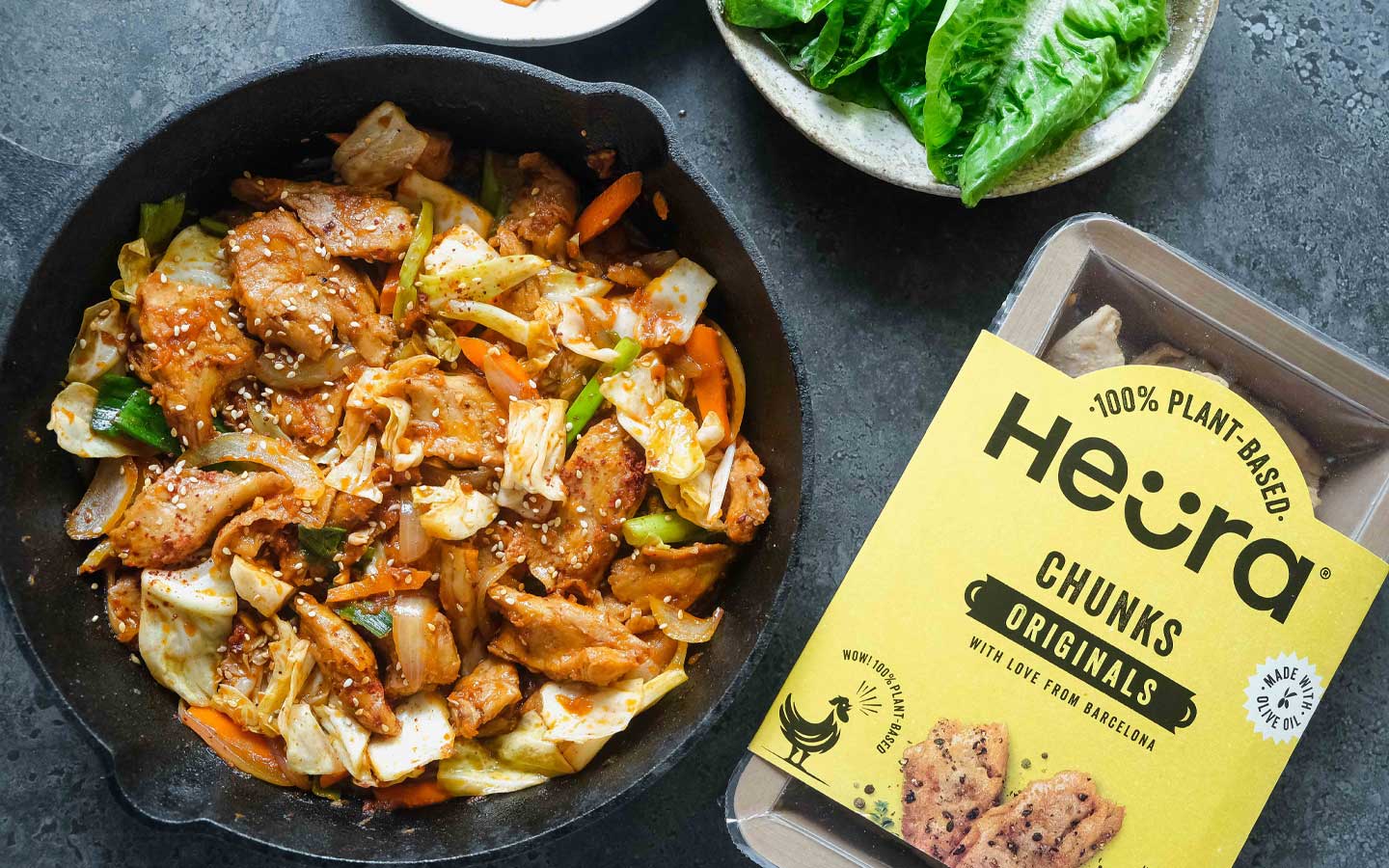Dak Galbi, a popular Korean stir-fried chicken dish, is a spicy, savory, and slightly sweet meal that delights food lovers around the world. This dish features marinated chicken, chewy rice cakes, cabbage, sweet potatoes, and bold gochujang-based sauce, all stir-fried together in a large pan. Originally from Chuncheon, South Korea, Dak Galbi has become a favorite dish among those who enjoy spicy and flavorful meals. In this article, we will explore the history, ingredients, cooking techniques, variations, and expert tips to help you make the perfect Dak Galbi at home.
The History of Dak Galbi
Dak Galbi originated in the 1960s in Chuncheon, a city in Gangwon Province, South Korea. It was initially created as an affordable alternative to Korean BBQ, providing a delicious and filling meal at a lower price. Unlike traditional BBQ, which uses expensive cuts of meat, Dak Galbi features boneless chicken pieces marinated in a rich, spicy sauce and stir-fried with vegetables.
Over the years, Dak Galbi gained popularity across South Korea, and many restaurants began serving it with a communal cooking style, where diners sit around a large grill and cook the dish together. This interactive dining mariatogel experience makes Dak Galbi not only a meal but also a social event where friends and family gather to enjoy great food and conversation.

The Essential Ingredients for Authentic Dak Galbi
The key to making authentic Dak Galbi lies in using the right ingredients. The star of the dish is boneless chicken thighs or breast, which is cut into bite-sized pieces for easy cooking and even flavor absorption.
The bold gochujang-based sauce is what gives Dak Galbi its signature spicy and slightly sweet flavor. The sauce is made with gochujang (Korean red chili paste), gochugaru (Korean chili flakes), soy sauce, garlic, sesame oil, honey, and sugar. This combination creates a deep, umami-packed flavor that coats every ingredient beautifully.
In addition to chicken, chewy rice cakes (tteok), cabbage, sweet potatoes, carrots, onions, and perilla leaves are commonly added. These ingredients absorb the spicy sauce, adding layers of texture and flavor. Some variations also include cheese, which balances the heat with its creamy, mild taste.
How to Make Dak Galbi Step by Step
Making Dak Galbi at home is simple and only requires a few steps. The first step is preparing the marinade by mixing gochujang, gochugaru, soy sauce, minced garlic, honey, and sesame oil. Coat the chicken in this marinade and let it sit for at least 30 minutes to allow the flavors to penetrate.
Next, heat a large pan or a Korean BBQ grill over medium-high heat. Add a small amount of oil, then place the marinated chicken in the center of the pan. Allow it to sear for a few minutes to develop a slight char, enhancing the smoky flavor.
After the chicken starts to cook, add the vegetables and rice cakes, stirring frequently to ensure that everything is evenly coated in the sauce. The heat should be kept at a moderate level to allow the ingredients to caramelize without burning. Stir-fry everything for 10 to 15 minutes, or until the chicken is fully cooked and the vegetables are tender.
For an extra indulgent touch, sprinkle shredded cheese over the dish in the last few minutes of cooking and let it melt into the sauce. This variation, known as Cheese Dak Galbi, has become incredibly popular in South Korea.
Once fully cooked, serve the Dak Galbi immediately, either on its own or wrapped in lettuce leaves or perilla leaves for a fresh contrast to the spiciness.
Variations of Dak Galbi
Although the classic version of Dak Galbi remains a favorite, there are several popular variations that cater to different tastes and preferences:
1. Cheese DakGalbi – A modern twist that features melted mozzarella cheese on top of the spicy stir-fried chicken, balancing the heat with a creamy, indulgent touch.
2. Seafood DakGalbi – This variation includes shrimp, squid, or mussels, adding a delicious seafood flavor to the dish.
3. Extra Spicy DakGalbi – For spice lovers, increasing the gochugaru and gochujang levels can create an intense fiery kick.
4. Mild DakGalbi– For those who prefer less heat, reducing the chili paste and flakes while adding more honey or sugar can create a milder, sweeter version.
The Best Side Dishes to Serve with Dak Galbi
DakGalbi is often enjoyed alongside traditional Korean side dishes (banchan) that complement its bold flavors. Some of the best side dishes include:
- Kimchi – The fermented, tangy taste of kimchi balances the heat of DakGalbi.
- Pickled Radish (Danmuji) – A refreshing and slightly sweet side dish that helps cleanse the palate.
- Korean Steamed Egg (Gyeranjjim) – A soft, fluffy egg dish that provides a mild contrast to the spice.
- Cold Noodles (Naengmyeon) – The cool, chewy texture of cold noodles helps refresh the taste buds after eating spicy DakGalbi.
- Korean Rice Balls (Jumeokbap) – These rice balls are often mixed with sesame oil and seaweed, making them the perfect way to soak up the remaining sauce.
The Health Benefits of Dak Galbi
Despite being a rich and flavorful dish, DakGalbi also offers several health benefits. Chicken, the main protein source, is high in lean protein, which helps support muscle growth and keeps you full longer.
The vegetables in DakGalbi provide essential vitamins and minerals, while the gochujang sauce contains capsaicin, a compound found in chili peppers that may boost metabolism and support heart health.
If you want a healthier version, you can reduce the amount of oil, use chicken breast instead of thighs, and add extra vegetables for more fiber and nutrients.
Tips for Making the Best Dak Galbi
To achieve the best results when cooking DakGalbi at home, follow these expert tips:
- Use Boneless Chicken Thighs – Thighs are more flavorful and tender compared to chicken breast.
- Marinate for at Least 30 Minutes – This step allows the flavors to fully infuse into the chicken.
- Stir-Fry Over Medium Heat – Cooking at the right temperature ensures the chicken stays juicy while the sauce caramelizes.
- Add Cheese for a Creamy Balance – If the dish is too spicy, melted cheese can help soften the heat.
- Serve Immediately – DakGalbi is best enjoyed fresh off the pan while it’s still hot and sizzling.
How to Store and Reheat Dak Galbi
If you have leftovers, store them in an airtight container in the refrigerator for up to three days. To reheat, warm the dish in a pan over medium heat, adding a splash of water if needed to prevent it from drying out.
Alternatively, you can repurpose the leftovers by making DakGalbi Fried Rice. Simply add cooked rice to the pan with the leftover DakGalbi, stir-fry for a few minutes, and enjoy a delicious second meal.
Why Dak Galbi is a Must-Try Dish
Dak Galbi is a spicy, flavorful, and satisfying dish that captures the essence of Korean cuisine. Whether enjoyed in a restaurant or made at home, it delivers bold flavors, tender chicken, and a fun, interactive dining experience.
With customizable spice levels and ingredient variations, DakGalbi can be adapted to suit different preferences, making it a dish that everyone can enjoy. By following the techniques and tips outlined in this guide, you can create an authentic and mouthwatering DakGalbi in your own kitchen. So, grab your ingredients, heat up the pan, and enjoy the rich and fiery flavors of Korean Spicy Stir-Fried Chicken
Also read this articlea: Kimchi Fried Rice: A Spicy and Savory Korean Comfort Food


